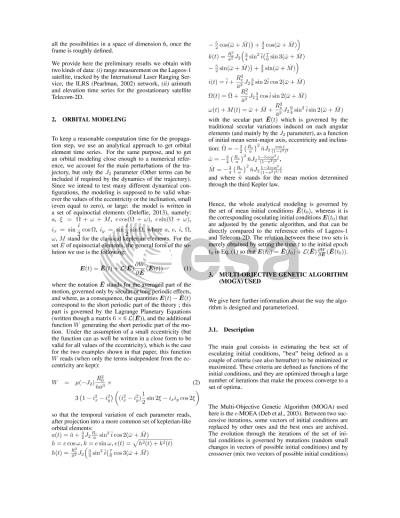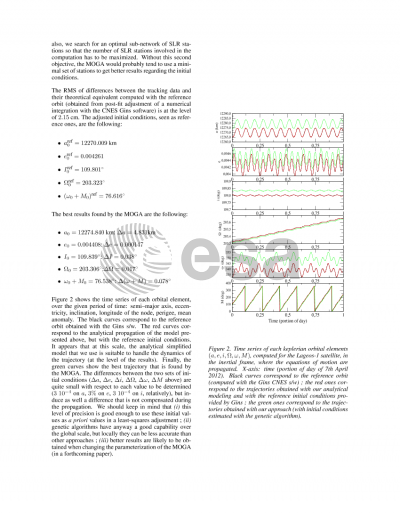Document details

Abstract
We present an orbit determination method based on genetic algorithms. Contrary to usual estimation methods mainly based on least-squares methods, these algorithms do not require any a priori knowledge of the initial state vector to be estimated. These algorithms can be applied when a new satellite is launched or for uncatalogued objects that appear in images obtained from robotic telescopes such as the TAROT ones. We show in this paper preliminary results obtained from an SLR satellite, for which tracking data acquired by the ILRS network enable to build accurate orbital arcs at a few centimeter level, which can be used as a reference orbit ; in this case, the basic observations are made up of time series of ranges, obtained from various tracking stations. We show as well the results obtained from the observations acquired by the two TAROT telescopes on the Telecom-2D satellite operated by CNES ; in that case, the observations are made up of time series of azimuths and elevations, seen from the two TAROT telescopes. The method is carried out in several steps: (i) an analytical propagation of the equations of motion, (ii) an estimation kernel based on genetic algorithms, which follows the usual steps of such approaches: initialization and evolution of a selected population, so as to determine the best parameters. Each parameter to be estimated, namely each initial keplerian element, has to be searched among an interval that is preliminary chosen. The algorithm is supposed to converge towards an optimum over a reasonable computational time.
Preview







